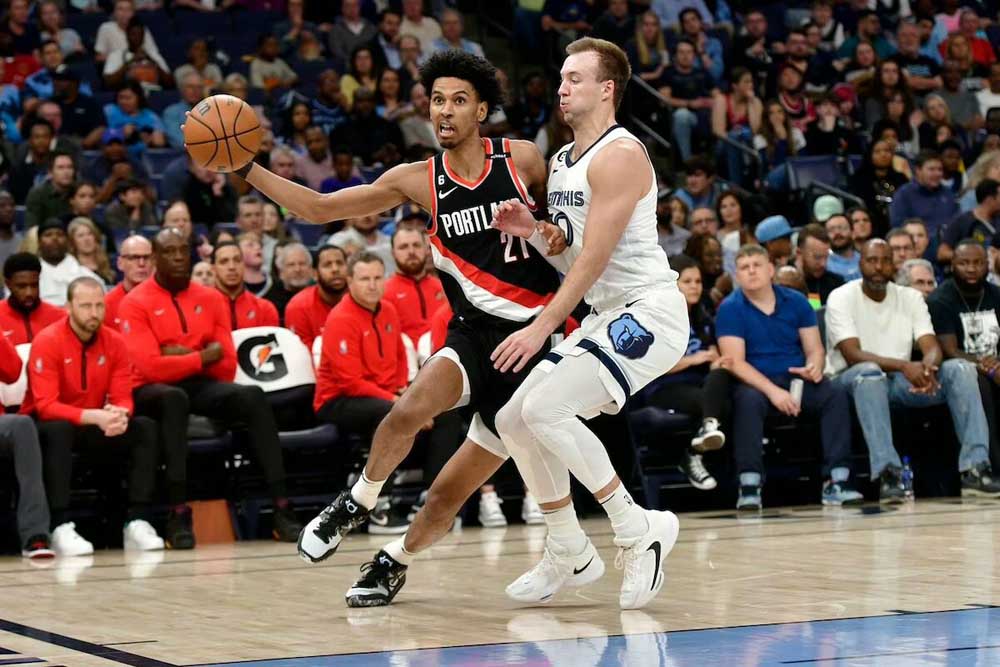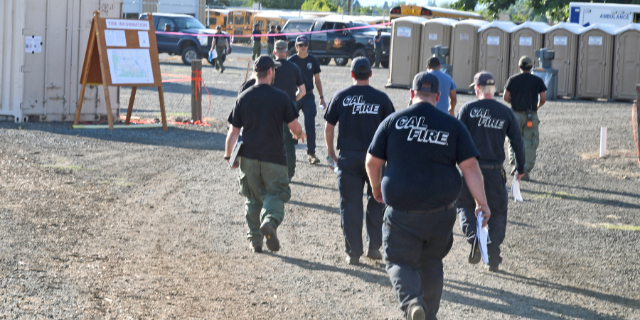Trail Blazers launch G League team that will start next season
Published 10:25 am Wednesday, April 26, 2023

- Portland Trail Blazers forward John Butler Jr. is among the players who would benefit from having a G League team in Portland. The Blazers say their new team will start play next fall at Chiles Center on the University of Portland campus.
As NBA teams over the last decade have become increasingly reliant on the G League as a tool for finding unheralded players and for developing young draft picks, the Portland Trail Blazers have largely been content to sit out the trend.
Trending
Since 2014, the Blazers have opted to develop young players in-house or to farm them out to teams in the G League, the basketball equivalent of a farm system, run by other NBA franchises.
That will change next season when a new Blazers affiliate will play at the Chiles Center on campus at the University of Portland.
“It’s just really been a huge goal of ours, really the last 18 months,” Blazers general manager Joe Cronin told The Oregonian/OregonLive. “Just pushing to get a team here, knowing that it’s important to player development, staff development. Just another huge player development vehicle that could really up our product.”
Trending
Last season, the Blazers and the Phoenix Suns were the only teams not to have a direct affiliation with a G League team. Portland has not had an affiliate since ending its partnership with the Idaho Stampede in 2014.
“We have a new group here now,” Cronin said, “and this group was adamant that we need to do this, front office and coaches.”
The new team, which does not yet have a name, will practice at the Blazers facility in Tualatin.
A G League season runs 50 games, spanning the NBA’s 82-game calendar.
Christa Stout, the Blazers vice president of innovation and technology, will oversee the business side of the team, while a new general manager will be hired and report to Mike Schmitz, the assistant general manager who joined the Blazers last spring after a career as an ESPN draft analyst.
The Blazers will announce a name for their G League team this summer. Dewayne Hankins, the Blazers president of business, said the franchise has run focus groups and fan surveys aimed at naming the team.
“We’re trying to have a little bit of fun with it and see where it ends up,” he said.
While Hankins, the Blazers president of business, said the team views the addition of a G League team as a “competitive advantage,” the more accurate description might be that it is addressing a competitive disadvantage.
By not having an affiliate, the Blazers had fewer tools to sign, develop and monitor players who could help the team down the road. It feels especially vital to operations in Portland, where the Blazers have never been able to simply create cap space and sign top players.
“You have to draft well and you have to develop those draft picks well,” Cronin said, “and you have to develop the undrafted guys and the young guys as well. We’ve got to hit in all those different areas. Draft, trade, player development.”
Hankins added: “Not having that key cog on player development has, I think, been a challenge for us.”
In that sense, the Blazers’ move feels long overdue. For many years, the Denver Nuggets were the only other team bucking the trend, but in 2021 they became affiliated with the Grand Rapids Gold.
Hankins said Portland had discussed the possibility of a G League team since 2017, but the plans went into overdrive when Cronin was hired as general manager last summer.
While different locations for the team were considered, he said, the University of Portland, which served as a host for the Phil Knight Invitational and Legacy tournaments, emerged as a logical partner.
“At the end of the day, having it close to us was great for both basketball and business reasons,” Hankins said. “Basketball because these guys can practice and train with the big league team and for business reasons, we feel like having games that people can go to at all demographics and income levels is really exciting.
“And we wanted to show an investment in Portland. That was really key to us.”
Operational costs for a typical G League franchise can run close to $2 million per year, with most teams understanding that the team will not be a moneymaker.
“Most of these businesses run at a loss and really we view it as a development cost,” Hankins said. “If you hit on a guy and get somebody who’s just incredible and can help your team on a contract, the opportunity cost of that is incredible. So I think that’s how we’re looking at it.”
Hankins and Cronin both said that buying into the G League shows a willingness to invest by owner Jody Allen, whose long-term commitment to the franchise has been in question since her brother Paul Allen’s death in 2018 and especially after Knight’s bid to buy the organization last year.
“She was really supportive and completely embraced the concept,” Cronin said. “She knows how this will boost our player development, knows the development this will have on future staff members.”
Throughout basketball, the G League has grown into a training ground not just for players but for coaches, executives and even broadcasters. Coaches like the Toronto Raptors’ Nick Nurse and the Lakers’ Darvin Ham got their starts in the G League, and Atlanta recently promoted Tori Miller, who in 2019 became the first woman hired as a G League general manager, from their affiliate to vice president of player personnel with the Hawks.
“For us, the business play here is what are the things we can use the G League team as a research lab,” Hankins said.
As the G League has grown since starting as the National Basketball Development League in 2001, the single-affiliation model has become nearly ubiquitous in the sport. Championship role players like Danny Green, Alex Caruso and Gary Payton II played extensively in the G League before becoming rotation regulars. And late draft picks such as Khris Middleton and Rudy Gobert spent considerable time in the G League before becoming NBA All-Stars.
Cronin pointed to Blazers rookie John Butler Jr. as a player who would have benefited from an in-town G League affiliate last season. Undrafted out of Florida State, Butler spent the season on a two-way contract with the Blazers, but before their end-of-season slide appeared in only nine games and averaged just over three minutes per appearance. In the G League he can play regular rotations.
Butler played six games on assignment with the Stockton Kings last season, but because that team is operated by Sacramento, the Blazers had less say over how he was utilized.
“It’s in-season repetition, it’s in-season game experience,” Cronin said. “If you don’t have a G League team and your player is on assignment elsewhere, you’re restricted to how much run they can get on a day-to-day basis, where you’re just not practicing a ton because you’re playing every day.”
By having their own team, the Blazers can model their G League operations on what the NBA team does, including coaching the same system Chauncey Billups runs, and assign players back and forth.
A common practice is to assign a player to the G League in the morning to get a full practice in and then recall them later that night to be on the bench with the NBA team.
While G League games are not generally considered a major draw for fans, the Blazers hope to create a family experience that will draw fans.
“It’s basketball and it’s at a different price point that fans can enjoy and come to and start to get them into the fold as fans,” Hankins said. “A lot of people you see at G League games are younger kids and families and things like that.”









